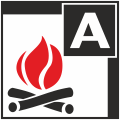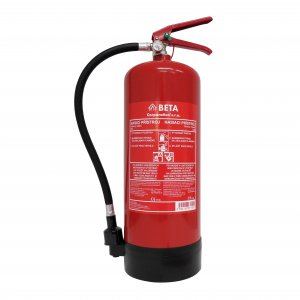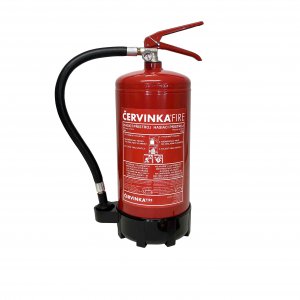Foam AB
Foam extinguishers are suitable for extinguishing Class A and B fires. They are mainly used for extinguishing flammable liquids that do not mix with water (e.g. gasoline, diesel fuel, mineral oils, paints). The extinguishing agent is water mixed with foam. The foam makes wetting easier, but above all, the foam isolates the burning substances from the oxygen in the air - thus working on the principle of the suffocation effect. These devices are used in the chemical industry, flammable liquid warehouses, paint shops, etc. Foam can be easily removed from surfaces after fire fighting.
WHAT CLASSES OF FIRE ARE FOAM EXTINGUISHERS DESIGNED FOR?
Foam extinguishers are designed to extinguish the following classes of fire:
- Class A - solid or organic materials such as wood, coal, paper, textiles or plastics.
- Class B - flammable liquids such as gasoline, petroleum oil, paint, or diesel

.png)
WHERE CAN A FOAM EXTINGUISHER BE USED?
Foam fire extinguishers are suitable for use in private areas, public areas, offices, laboratories, agriculture, hotels etc.
WHAT ARE THE TECHNICAL SPECIFICATIONS OF FOAM EXTINGUISHERS?
Foam fire extinguishers are usually manufactured with different filling capacities, commonly 6L and 9L, to suit different needs and applications. The extinguishers are also manufactured to withstand extreme temperatures, typically ranging from 0°C - +60°C, allowing them to be used in a variety of climates.
WHAT IS THE IMPORTANCE OF THE RATING OF A FIRE EXTINGUISHER?
The extinguishing capability, or rating, is represented on the extinguisher by a combination of numbers and letters (e.g. 21A 144B, 34A 233B, etc.). The numbers indicate the size of the standard fire to be extinguished and the letters indicate the class of each fire. Thus, in the example given 21A 144B, the extinguishing power is 21 for fire class A and 144 for fire class B. Fire class A has a total of 8 different levels for extinguishing power and class B has a total of 9.





 Settings
Settings